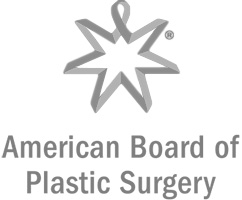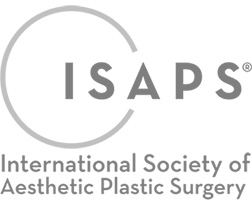RECOVERY INSTRUCTIONS
– FACE PROCEDURES –





The results and outcome of your facial plastic surgery is influenced by your healing and recovery. This is as important as having a great surgery itself. Thus, it is imperative that your recovery is planned well. That means minimal activities, optimal nutritional intake, rest, healing, and taking it super easy.
You may wish to arrange to have a care giver to help you for a day or two. A care giver should be helping you with:
- Ambulation
- Meals and Eating
- Dressing Changes and Drain care
- Getting in and out of chair/bed
Your recovery time will depend on how quickly you heal and how extensive the facial surgery is. Typically, smaller surgeries will heal faster than the more extensive full facial rejuvenation. Healing is not only necessary for skin incisions but also the deeper layers. Skin typically appears to be mostly healed by 7 days but the deeper facial layers take longer to heal.

General Instructions
Day of Surgery- When you wake up from your procedure, you will be in the recovery room and will be wearing compression dressings. You should plan to wear compression dressings for about 7 days. This controls swelling.
Caregiver- When patients leave the surgery center after general anesthesia, they are groggy for about 12 hours or overnight. It is very important to have an adult to assist you with getting home and taking your medications for at least the first 24 hours.
Pain- Expect soreness during the first few days after facial surgery. You can control the pain by taking OTC pain medications for the smaller procedures or prescribed painkillers.
Early Ambulation- You should attempt to get out of the bed the first night. This is the best way to reduce the chance of getting a blood clot in the legs. Walk every 3 hours indoor for 5 to 10 minutes with help of a care giver.
Nausea- If you experience nausea, take your nausea pill one hour before taking your pain medication or antibiotics.
Sleep- During the first week after facial surgery, attempt to sleep on several pillows to keep you head high. This reduces facial swelling.
Incision Care– After surgery, apply a thin layer of Bacitracin ointment to your facial incisions or Ophthalmic Bacitracin ointment to your eyelid incisions, several times a day to keep them moist.
Dressings- Change dressings daily for the first 7 days. Use like for like.
Drains: You may have a small drain after a forehead and facelift surgeries. Drains will remove fluid that exudes from tissues after surgery. The sooner the fluid is removed, the faster the tissues will heal back. Thus, drains are your friends. They must be secured, cleaned with alcohol or hydrogen peroxide twice a day, milked every 3 hours, and emptied a few times a day. Drains are typically removed in the first 48 hours.
Bruising- There will be bruising at surgical sites as well as in adjacent or dependent areas. For example, you may note bruising and swelling around the eyes after forehead surgery. Bruising may last up to 2 weeks. Avoid, sunshine since it can cause bruises to become long-lasting skin stains.
Ice: Use ice on the surgical sites to reduce bruising. Apply ice as a frozen pea bag for 20 minutes on and 20 minutes off. You can do one side for 20 minutes and then the other side and continue as often as you can.
Shower: Do not bath or shower till cleared by Dr. Agha. If you have drains, they must be removed before you can shower. Also, your incisions must be sealed closed before you can get them wet. Tap water has bacteria such as Pseudomonas in it which can cause infection of the surgical site and openings. Thus, patience is a must and only after our team clears you for showering.
Make sure that you use gentle shampoo when washing your hair to avoid irritation on your incision site. You may use baby shampoo while your incisions are healing.
First Post-operative Visit- This will be scheduled before your surgery.
Swelling- Swelling after surgery is common and to be expected. Swelling is not symmetrical and one side may swell more than another. Swelling may take 2 or more weeks subside.
Driving – You may drive when driving does not cause pain or when you are not on pain medications. It is not safe to drive a car within twenty-four hours of taking narcotic pain medication as your reflexes and alertness may be altered.
Light Exercise- We recommends light exercise to prevent blood clots. Light exercise includes walking, as well as moving your arms and legs while sitting. If you should feel pain or pulling at the incision site, cease the movement.
Activities- During the first week after surgery, avoid activities that raise your blood pressure. This could cause bleeding at the operative site, which could result in a hematoma (collection of blood). Walking is the safest exercise, especially during the first week. Cardiovascular activities, such as riding a stationary bicycle or brisk walking, can be initiated after about 4 weeks. Avoid heavy lifting, contact sports, and jogging for up to 6 to 8 weeks. Eight weeks after surgery, you will be nearing your pre-operative state.
Scarring- Many factors contribute to scar healing. Your scars will be pink for about six weeks. Non-smokers and those who follow Our Enhanced Recovery Program have a better chance of rapid healing and thinner scarring. Expect to wait at least nine months before your scars lighten in color and become as flat as the rest of your skin. To ensure good healing, wear sunscreen with at least SPF 30 when outside.
Numbness- All surgical areas may stay numb for a few weeks. Massage will help to desensitize your skin in order to avoid hypersensitivity or skin irritation.
Follow-ups- Regular check-ups protect against complications. We will be recommending scar treatments during your follow up appointments at 3, 6 and 12 months.
Emergencies – Some discomfort is expected following your surgery. Be sure to tell us if:
- There is an increase in swelling, pain, redness, drainage, or bleeding in the surgical area.
- You develop fever, dizziness, nausea or vomiting, or a general ill feeling.
- If you experience shortness of breath, chest pains, or unusual heartbeats, seek medical attention immediately. Should any of these complications occur, you may require hospitalization and additional treatment.
